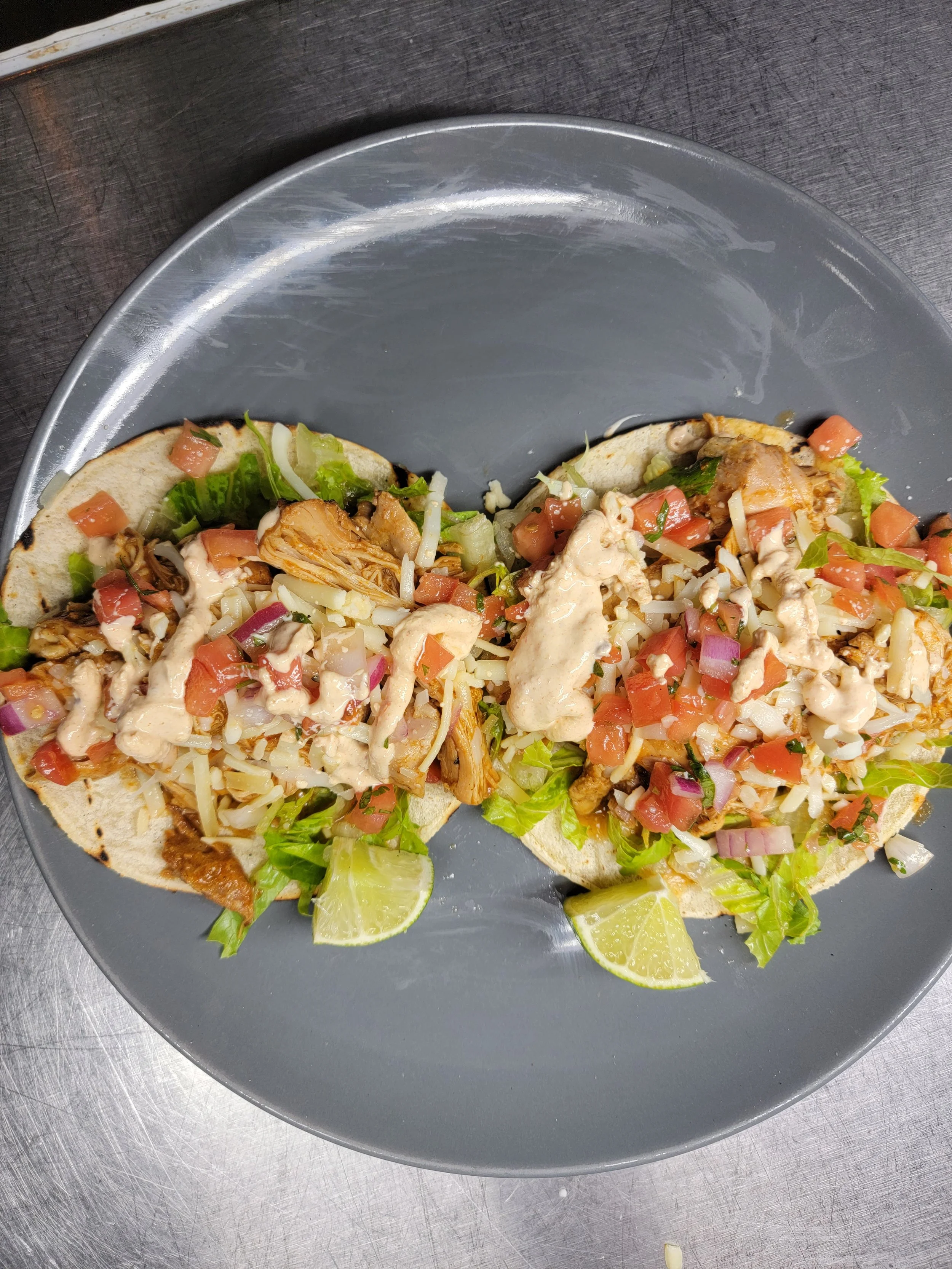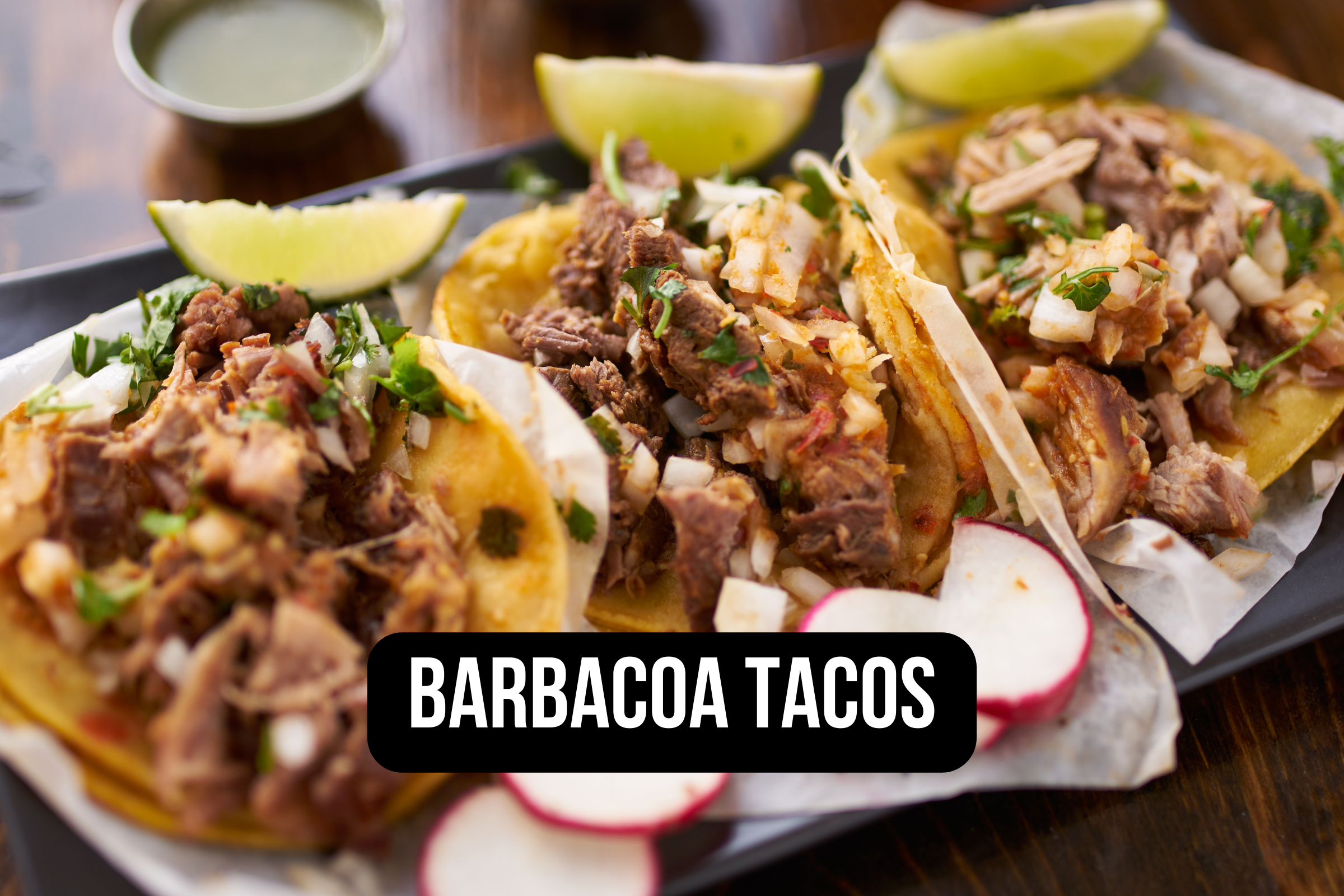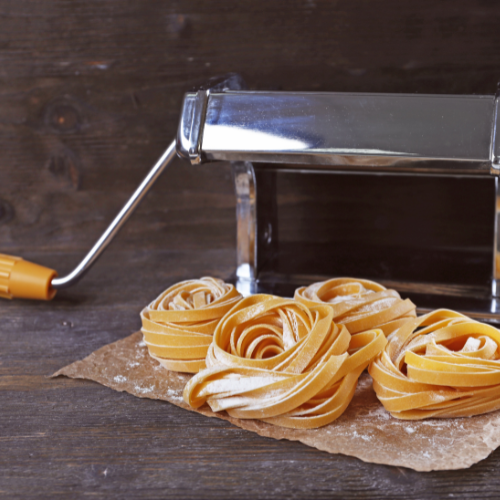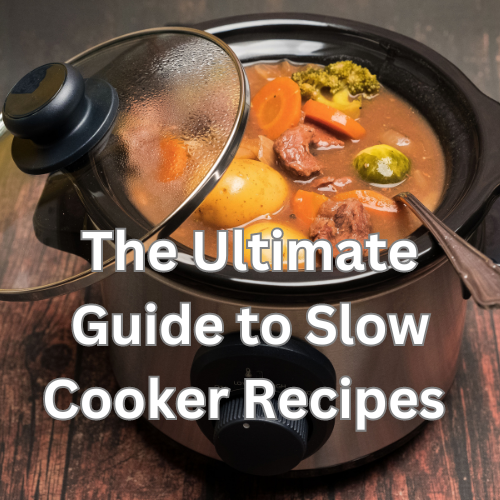How to Sous Vide Pork Tenderloin
Introduction to Sous Vide Cooking Unlocking Culinary Excellence
Cooking is an art form that has continuously evolved throughout the ages, and sous vide cooking stands as a testament to the ingenuity of culinary innovation. Derived from the French term meaning "under vacuum," sous vide cooking is a method that has gained immense popularity amongst seasoned chefs and home cooks alike. By utilizing precise temperature control, this technique allows for unparalleled precision in cooking, resulting in remarkable flavors and textures. The Origin: Pioneering Precision
The inception of sous vide can be attributed to Sir Benjamin Thompson, an English physicist who first experimented with slow-cooking meat inside sealed vessels in the late 18th century. However, it wasn't until decades later that sous vide truly flourished as a culinary technique.
In the 1960s, Dr. Bruno Goussault—an eminent French food scientist—refined and popularized sous vide by introducing precise temperature control using water baths. Since then, it has become a staple in professional kitchens around the world.
Benefits of Sous Vide CookingElevating Your Culinary Endeavors: Exploring the Benefits of Sous Vide Cooking
Sous vide cooking offers an array of advantages, making it a preferred choice for discerning cooks seeking perfection in their dishes. One prominent benefit lies in its ability to preserve ingredients' natural flavors and moisture content. By sealing food within vacuum-sealed bags or airtight containers before immersion in precisely heated water baths, flavors are conserved rather than diluted or evaporated like traditional cooking methods may cause. Precision at Its Finest
The hallmark advantage of sous vide cooking is precise temperature control. By cooking ingredients at a consistent, low temperature over extended periods, it allows for even heat distribution and eliminates the risk of overcooking or undercooking. This method provides chefs with the ability to achieve desired levels of doneness while maintaining textures that are tender, succulent, and uniform throughout.
Equipment Required for Sous Vide CookingEquipping Your Culinary Arsenal: The Essential Tools for Sous Vide Cooking
Sous vide cooking requires specialized equipment to achieve optimal results. While this may seem daunting at first, the investment is well worth it for those seeking to elevate their culinary prowess. Here are the essential components needed:
1. Immersion Circulator: At the heart of sous vide cooking lies the immersion circulator—a device that precisely controls water temperature.
This portable gadget attaches to any pot or container and circulates water, ensuring uniform heat distribution throughout cooking.
2. Vacuum Sealer: A vacuum sealer is indispensable in sous vide cooking as it provides an airtight seal around ingredients before submersion. It removes excess air from vacuum-sealable bags or containers, preventing oxidation and creating a perfect environment for impeccable results.
3. Water Bath Container: Choosing an appropriate water bath container is crucial for maintaining stable temperatures during sous vide cooking.
Options range from plastic tubs to specially designed stainless steel containers, each offering different insulation properties and sizes to suit individual needs. Stay tuned for section 2 of this article where we will delve into Understanding Pork Tenderloin—the perfect ingredient for your sous vide adventures!
Description and Characteristics of Pork Tenderloin
Pork tenderloin, often referred to as the "filet mignon of pork," is a lean and tender cut of meat from a pig's loin. It is long and slender in shape, typically measuring about 1 to 1.5 inches in diameter and 10 to 12 inches in length. The color of raw pork tenderloin ranges from pale pink to light red, depending on the animal's breed, diet, and age.
What sets pork tenderloin apart from other cuts is its exceptional tenderness. This can be attributed to its minimal connective tissue and relatively low intramuscular fat content.
Unlike fattier cuts like pork belly or shoulder, which require slow cooking methods to break down collagen and render fat, pork tenderloin is naturally tender and doesn't need prolonged cooking times. Despite being lean, pork tenderloin offers a succulent texture when cooked properly.
Its delicate flavor profile allows it to absorb seasonings easily while retaining its own unique taste. Whether marinated or seasoned with dry rubs, this versatile cut lends itself well to various culinary styles and flavor combinations.
Nutritional Value and Health Benefits of Pork Tenderloin
Pork tenderloin is a delight for the taste buds and a nutritious addition to any diet. It provides an excellent source of high-quality protein essential for muscle growth, repair, and overall body function.
A 3-ounce serving of cooked pork tenderloin contains approximately 22 grams of protein. In addition to protein, pork tenderloin offers essential vitamins and minerals that support overall health.
It is an excellent source of B vitamins like thiamine (vitamin B1), riboflavin (vitamin B2), niacin (vitamin B3), pyridoxine (vitamin B6), and vitamin B12. These vitamins play crucial roles in metabolism, energy production, and nerve function.
Pork tenderloin is also rich in essential minerals such as iron, zinc, phosphorus, and selenium. Iron is necessary for oxygen transport in the blood and plays a vital role in maintaining healthy cells.
Zinc is involved in immune function and wound healing, while phosphorus supports bone health. Selenium acts as an antioxidant that helps protect cells from damage.
When consumed as part of a balanced diet, pork tenderloin can be a healthy choice for individuals looking to meet their protein needs while enjoying a flavorful and satisfying meal. Sources:
- USDA FoodData Central: https://fdc.nal.usda.gov/ - National Pork Board: https://www.pork.org/
Preparing the Pork Tenderloin for Sous Vide Cooking
Selecting the Right Cut of Pork Tenderloin
When it comes to selecting the perfect cut of pork tenderloin for sous vide cooking, there are a few factors to consider. First and foremost, look for tenderloins that are uniform in shape and size, as this will ensure even cooking throughout the meat.
Additionally, pay attention to the color of the meat – it should be pale pink with a minimal amount of fat marbling. Avoid cuts that have excessive fat or those with darkening or discoloration.
Factors to Consider when Choosing a Cut
One important factor to consider is the thickness of the pork tenderloin. Thinner cuts, around 1 inch thick, will cook more quickly and yield a slightly different texture compared to thicker cuts which may take longer but result in juicier meat.
Another consideration is whether you prefer boneless or bone-in pork tenderloin. While bone-in cuts can add flavor and moisture during cooking, they may require additional time in sous vide due to their thickness.
Quality Indicators to Look for in the Meat
When examining pork tenderloins at your local butcher or grocery store, there are several quality indicators you should look out for. Firstly, check for any signs of discoloration or unpleasant odors as these could indicate spoilage.
Secondly, assess its firmness – an ideal pork tenderloin should feel slightly springy when pressed gently with your fingertips. Ensure that there is no excess moisture in the packaging as this could be a sign of poor handling or improper storage.
Seasoning the Pork Tenderloin
To enhance the flavor profile of your sous vide pork tenderloin, seasoning plays a crucial role. The key is to strike a balance between enhancing the natural taste of the meat and adding complementary flavors.
While there are countless seasoning options available, some popular choices for pork tenderloin include garlic, rosemary, thyme, paprika, and black pepper. Experiment with different combinations to find your preferred flavor profile.
Recommended Seasonings and Flavor Combinations
A classic and simple seasoning for pork tenderloin is a mixture of salt, black pepper, and garlic powder. This allows the natural flavors of the meat to shine through while adding a subtle kick.
If you prefer bolder tastes, consider marinades or spice rubs containing ingredients like soy sauce, honey, Dijon mustard, or even a touch of balsamic vinegar. These flavorful additions can elevate the taste of your pork tenderloin to new heights.
Marinating vs Dry Rubs: Pros and Cons
One option for seasoning your sous vide pork tenderloin is marinating it in a liquid mixture before cooking. Marination not only adds flavor but can also help tenderize the meat by breaking down its fibers. However, marinating can slightly alter the texture and moisture content of the pork tenderloin during sous vide cooking.
On the other hand, dry rubs consisting of spices and herbs adhere well to the surface of the meat without affecting its texture significantly. Dry rubs provide concentrated flavors while allowing for more controlled seasoning levels based on personal preference.
By carefully selecting your cut of pork tenderloin based on factors such as thickness and quality indicators, you are setting yourself up for a successful sous vide cooking experience. Experimenting with different seasonings and flavor combinations will allow you to customize your dish according to personal preferences while taking advantage of various marination or dry rub techniques.
Setting Up the Sous Vide Cooker
Before delving into the art of sous vide cooking, it is essential to ensure that your sous vide cooker is properly set up. While each model may have specific instructions, there are a few general steps to follow. Begin by placing the sous vide cooker in a pot or container filled with water.
It is crucial to choose a container that can withstand high temperatures and hold enough water to submerge the pork tenderloin completely. Next, attach the sous vide cooker securely onto the side of the container, ensuring it is immersed in water but not touching the bottom or sides to promote even circulation.
Check that the power cord is safely away from water and any potential hazards. Once everything is securely set up, you can proceed with selecting the appropriate temperature for your pork tenderloin.
Choosing the Right Temperature for Pork Tenderloin
The ideal temperature for cooking pork tenderloin using sous vide depends on personal preference and desired doneness level. However, it is essential to prioritize food safety by adhering to safe internal temperature guidelines recommended by culinary experts and health organizations. The U.S. Department of Agriculture (USDA) recommends cooking pork until it reaches an internal temperature of 145°F (63°C).
This ensures both safety and tenderness. However, some individuals may prefer their meat cooked differently; therefore, adjusting the final temperature within a safe range might be necessary.
Safe Internal Temperature Guidelines
To achieve optimal safety without compromising taste and texture, consider these general guidelines when cooking pork tenderloin sous vide:
Rare: 135°F (57°C) - The meat will be pink throughout with soft texture.
Medium-Rare: 140°F (60°C) - The meat will have a rosy hue with a slightly firmer texture.
Medium: 145°F (63°C) - The meat will be light pink, juicy, and tender.
Well-Done: 160°F (71°C) - The meat will be fully cooked but might sacrifice some tenderness.
Remember that these guidelines are not set in stone and can be adjusted based on personal preference. Sous vide cooking allows for precise control over the internal temperature, ensuring consistent results each time.
Factors that Influence Temperature Selection
When choosing the ideal temperature for your sous vide pork tenderloin, it is crucial to consider various factors that can influence the outcome:
Pork Tenderloin Thickness: Thicker cuts may require longer cooking times or slightly higher temperatures to reach the desired doneness throughout.
Taste Preference: Some individuals prefer their pork more tender and juicy, while others might prioritize a firmer texture. Adjust the temperature accordingly to achieve your desired resu
Recipe Requirements: Certain recipes or flavor profiles may suggest specific temperature ranges to enhance particular attributes of the pork tenderloin. Follow these recommendations for an optimized culinary experience.
Preheating the Water Bath
Achieving and maintaining a stable water bath temperature is vital for successful sous vide cooking. Before placing your seasoned pork tenderloin into the water bath, it is essential to preheat it to your desired cooking temperature.
This step ensures consistent thermal distribution throughout the cooking process. To preheat efficiently, set your sous vide cooker to your desired final target temperature according to the guidelines mentioned earlier.
Allow sufficient time for the water bath's contents to reach and stabilize at the desired temperature before adding the pork tenderloin. This can take up to 30 minutes, depending on the volume of water and your specific equipment.
Water Bath Container Options: Pros and Cons
When selecting a container for your sous vide cooking, it is crucial to consider different options and their advantages or limitations:
Stockpot or Large Cooking Pot: These are commonly used due to their availability in most kitchens. They provide ample space for water circulation, making them suitable for a variety of sous vide recipes.
However, they may require more energy to maintain consistent temperature due to their larger surface area exposed to air.
Plastic Food-Grade Containers: Dedicated sous vide containers made of polycarbonate or other food-grade plastics are designed explicitly for this cooking technique.
They provide excellent insulation, allowing for better heat retention and energy efficiency. Additionally, they often feature convenient lids that minimize water evaporation during longer cooking times.
Vacuum-Sealed Bags: In certain cases, vacuum-sealed bags can serve as an alternative when no container is available or when cooking smaller portions. Although less common, this method still requires proper insulation by using insulating materials such as towels or foam pads around the bags while submerged in the water bath.
Tips for Maintaining Water Temperature Stability
Here are some helpful tips to ensure that your water bath maintains a stable temperature throughout the sous vide cooking process:
Use an insulated lid or cover on the container to minimize heat loss through evaporation.
Avoid frequent opening of the lid during cooking; each time it's opened, heat escapes from the water bath.
Consider using a sous vide insulation sleeve or wrap around the container to further reduce heat loss.
Use an instant-read thermometer periodically to monitor water temperature and make adjustments if needed.
By following these tips, you can maintain precise temperature control during your sous vide cooking adventure, ensuring a consistently delicious and perfectly cooked pork tenderloin every time.
Sous Vide Cooking Process for Pork Tenderloin
Sealing the Meat Properly
Achieving a proper seal is crucial when cooking pork tenderloin sous vide. The two main methods for sealing the meat are vacuum sealing and using a ziplock bag.
Vacuum sealing involves using a vacuum sealer machine to remove all the air from the bag before sealing it tightly. This method ensures that there is no air left in the bag, creating an airtight environment that allows for optimal heat transfer and prevents any unwanted moisture loss.
On the other hand, if you don't have access to a vacuum sealer, using ziplock bags can be an efficient alternative. To use this method effectively, carefully place the seasoned pork tenderloin inside a sturdy ziplock bag, leaving enough space at one end to allow air to escape while sealing.
Submerge the bag into water until almost all of it is submerged but leave an opening above water level. Slowly lower the bag into the water bath, allowing water pressure to push out any remaining air bubbles before fully sealing it.
Tips for Removing Air from Bags Effectively
When utilizing either method of sealing, ensuring there is minimal air inside the bags is essential for achieving consistent and precise results with your sous vide pork tenderloin. Here are some useful tips to help remove air effectively:
1. Gravity displacement: To aid in removing as much air as possible from your bags without using a vacuum sealer, employ gravity displacement technique. Immerse one edge of an unsealed ziplock bag into a water-filled container up until just below its opening while keeping most of it outside of water.
As you seal the bag almost entirely shut, allow gravity to push out excess air through submerged portion before completely closing it. 2. Immersion method: When employing vacuum-sealing equipment, immerse your sealed bag of pork tenderloin almost entirely into a water bath, leaving the unsealed edge above water level.
The pressure from the surrounding water will push out any remaining air in the bag. Once most of the air is gone, quickly seal the bag completely.
Immersion Time and Techniques
To achieve optimal results with sous vide cooking, it's crucial to consider immersion time and techniques for pork tenderloin. The recommended cooking times depend on the thickness of your pork tenderloin cut. For instance, a 1-inch thick piece may require approximately 1 to 2 hours to reach perfection, while a thicker cut around 2 inches might need 2 to 3 hours.
For rare or medium-rare doneness, aim for an internal temperature between 135°F (57°C) to 145°F (63°C). Medium doneness falls within the range of 145°F (63°C) to 155°F (68°C), while well-done reaches temperatures above that.
It's important to note that these recommendations are not set in stone and can be adjusted based on personal preferences. Sous vide cooking allows for precision control over the final outcome, so experiment with different immersion times and temperatures until you find your desired level of tenderness and juiciness.
Remember that each piece of meat is unique, so factors like individual thickness variations may influence cooking times. Use a reliable sous vide calculator or refer to trusted recipes as starting points but always rely on internal temperature measurements for ultimate accuracy.
Finishes and Post-Sous Vide Steps
Searing or Grilling Options: Elevating the Flavor Profile
One of the final steps in sous vide cooking is adding a beautiful sear or grill marks to your perfectly cooked pork tenderloin. Searing creates a flavorful crust on the surface of the meat, enhancing its taste and appearance. To achieve this, there are a few methods you can choose from.
One popular option is using a hot skillet or griddle on the stovetop. Heat some oil in the skillet until it shimmers, then carefully place the sous vide pork tenderloin onto it.
Sear each side for about 1-2 minutes until golden brown, being cautious not to overcook it. Alternatively, you can use a blowtorch specifically designed for culinary purposes to sear your pork tenderloin.
This method provides precise control and allows for even browning without risking overcooking the meat. Simply move the torch flame back and forth across all sides of the tenderloin until desired caramelization is achieved.
Resting and Serving: The Final Touches
After searing or grilling your sous vide pork tenderloin, it's important to let it rest before slicing into it. Resting allows the juices within the meat to redistribute evenly throughout, resulting in a more succulent and flavorful end product. Transfer your cooked pork tenderloin to a cutting board or plate and loosely cover it with aluminum foil for about 5-10 minutes.
When ready to serve, place your rested pork tenderloin on a clean cutting surface and slice it into medallions with a sharp knife. Arrange them beautifully on serving plates or platters alongside complimentary sides such as roasted vegetables, mashed potatoes, or a refreshing salad.
Conclusion
Sous vide cooking offers an exceptional method for preparing pork tenderloin with precision and remarkable results. By following the steps outlined in this article, you can achieve a perfectly cooked, tender, and juicy pork tenderloin every time. From selecting the right cut to seasoning it to perfection, setting up your sous vide cooker correctly, and adding finishing touches like searing or grilling, sous vide cooking allows you to create a culinary masterpiece in your own kitchen.
Explore the various flavor profiles by experimenting with different seasonings and marinades that suit your taste preferences. With a little practice and creativity, you'll be able to elevate this already delicious cut of meat to new heights.
Enjoy the tender texture and incredible flavors that sous vide cooking unlocks in pork tenderloin. So go ahead, embark on your culinary adventure and savor the joy of creating restaurant-quality dishes at home!



























































































